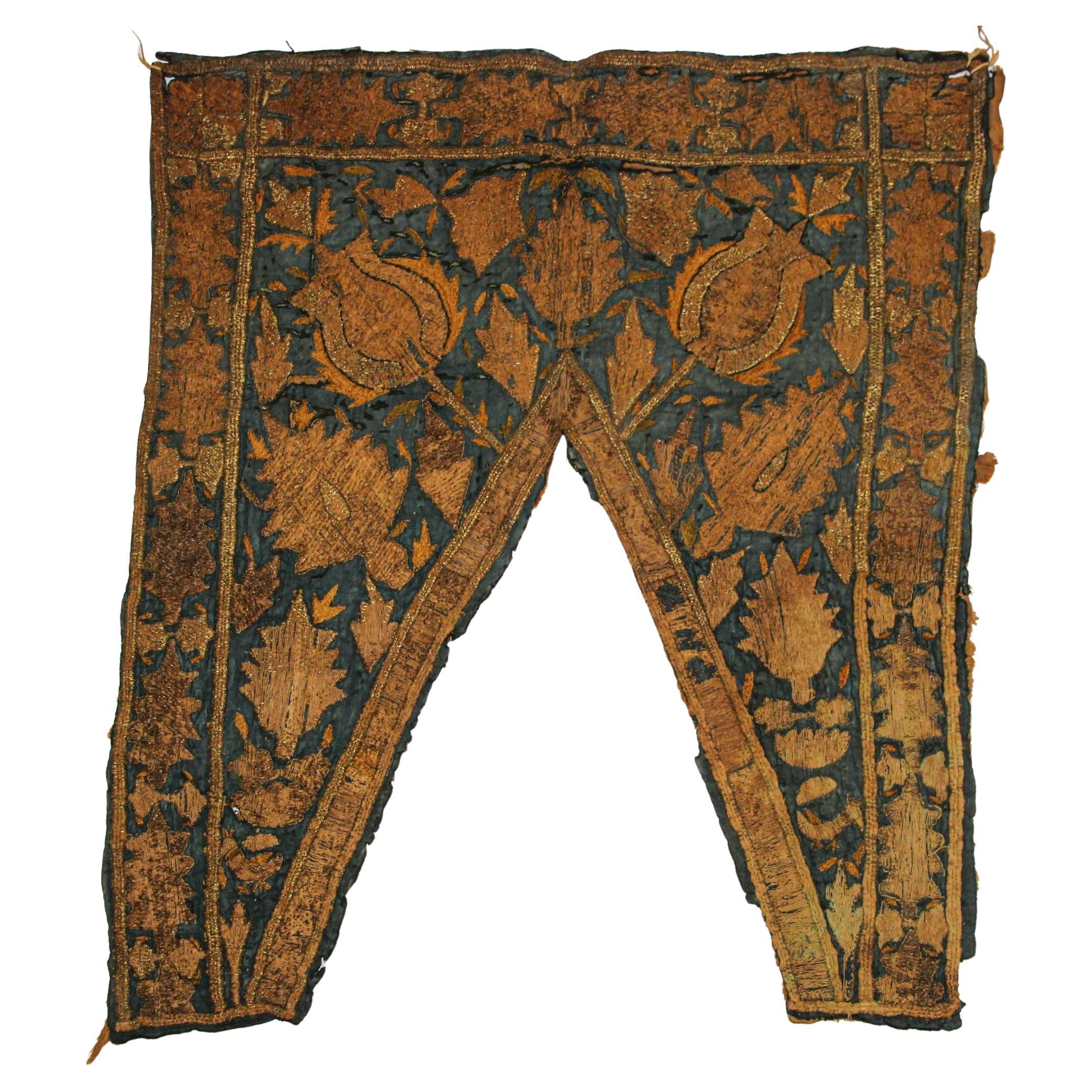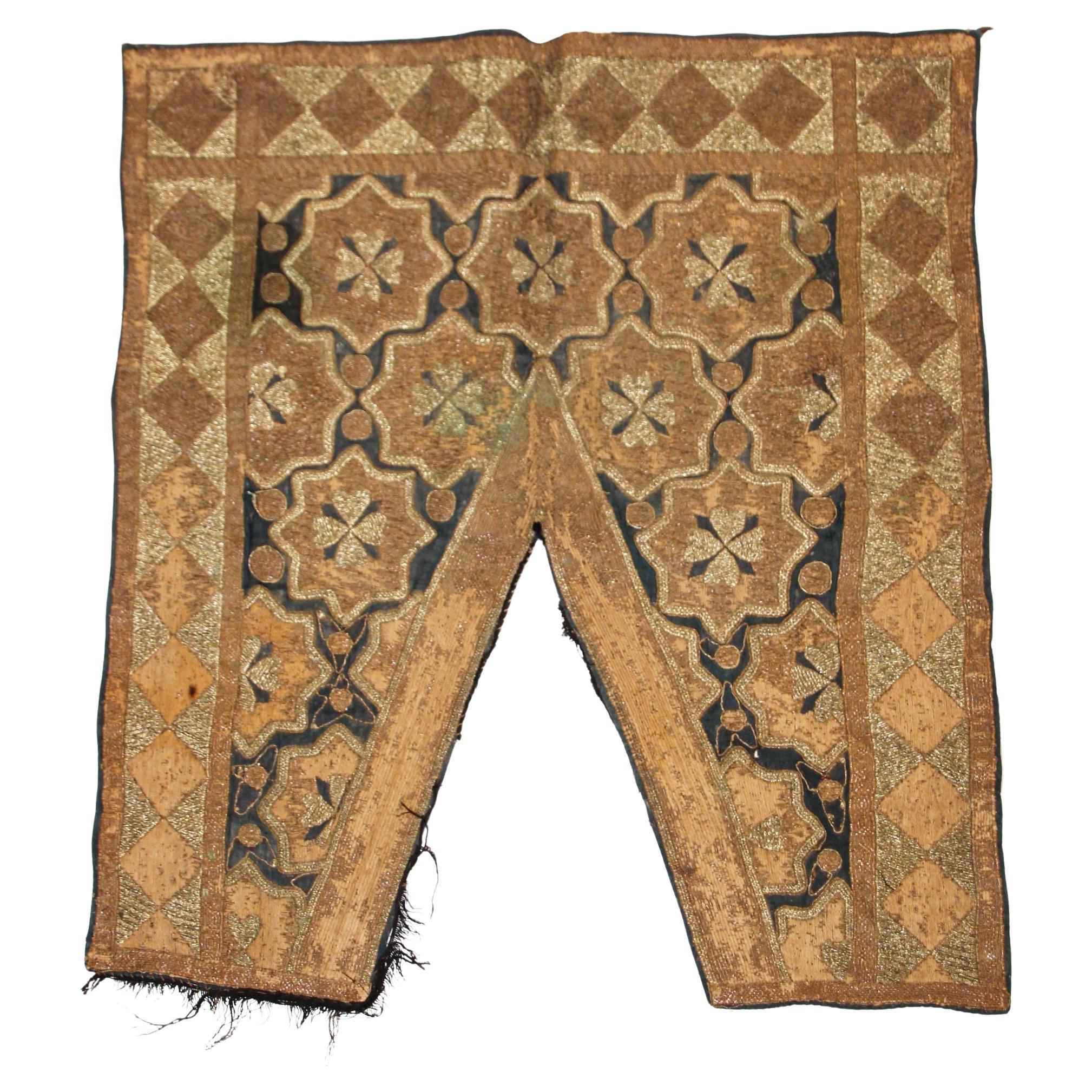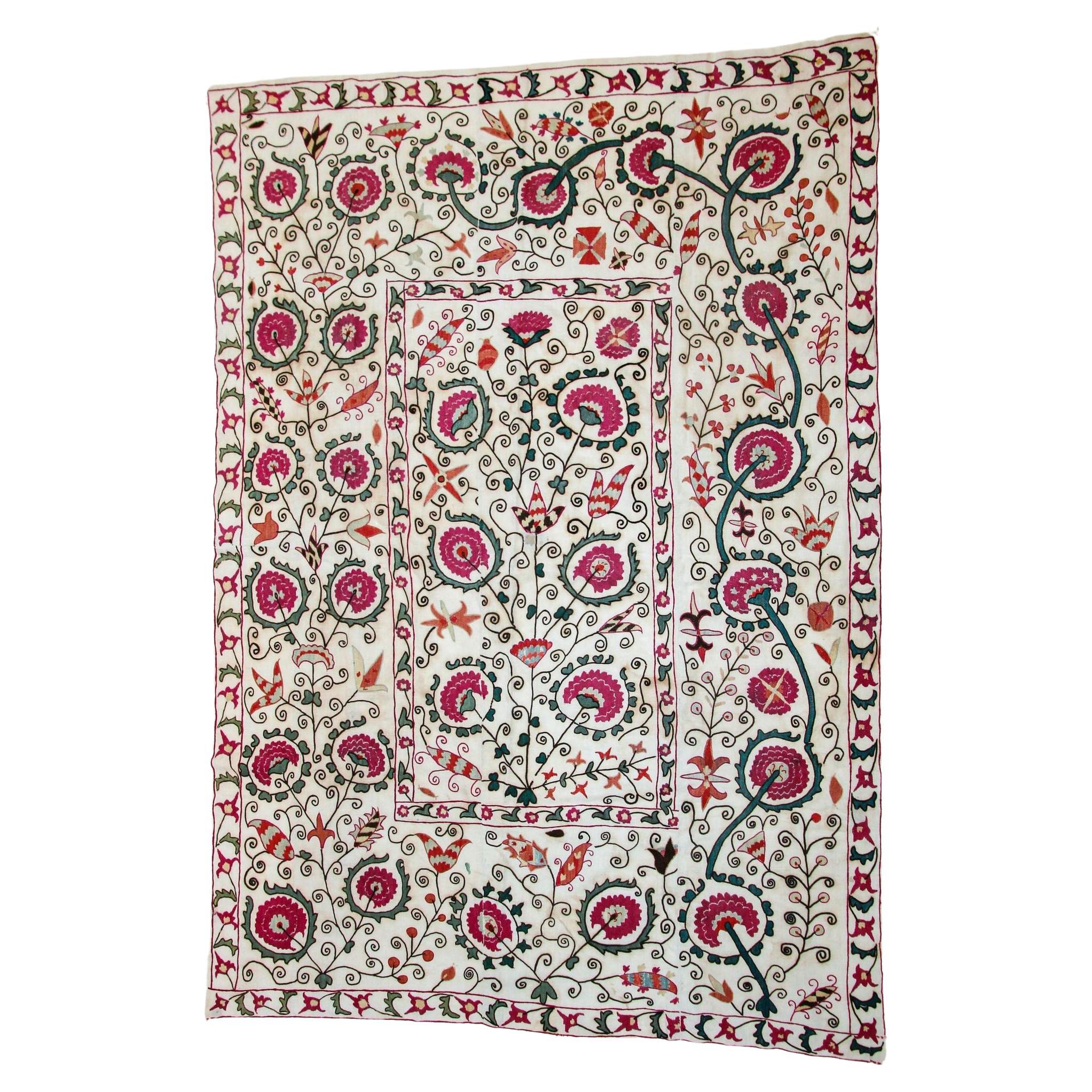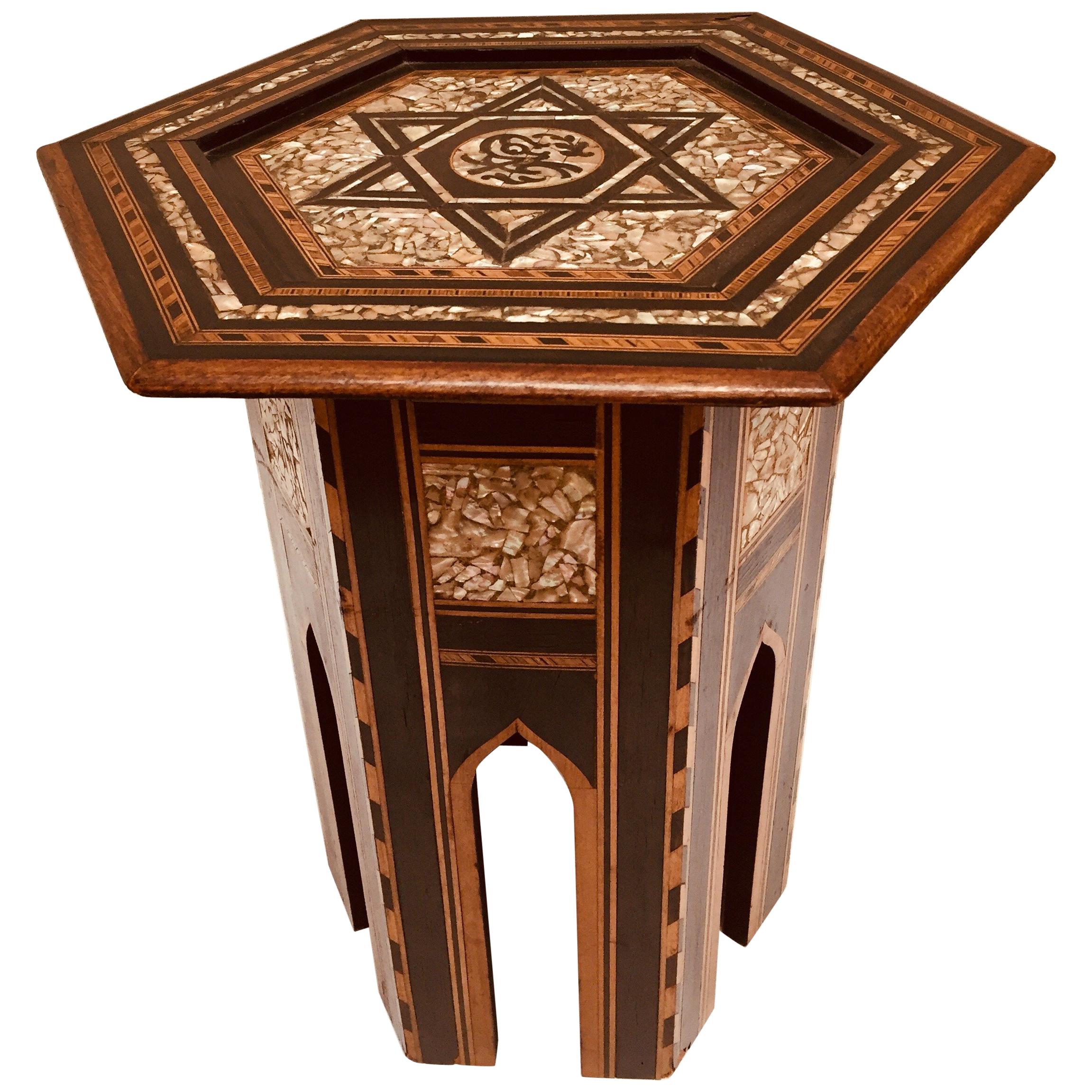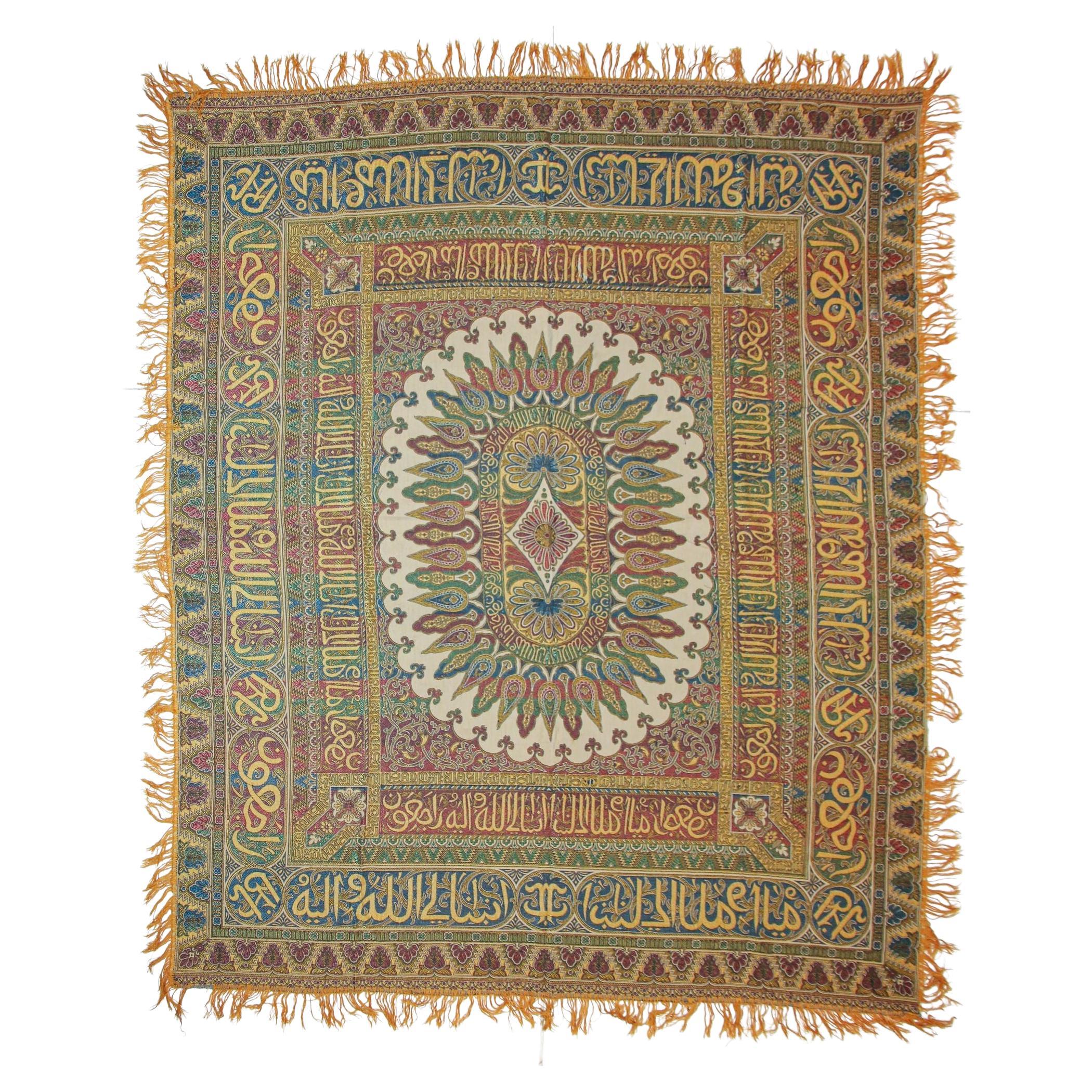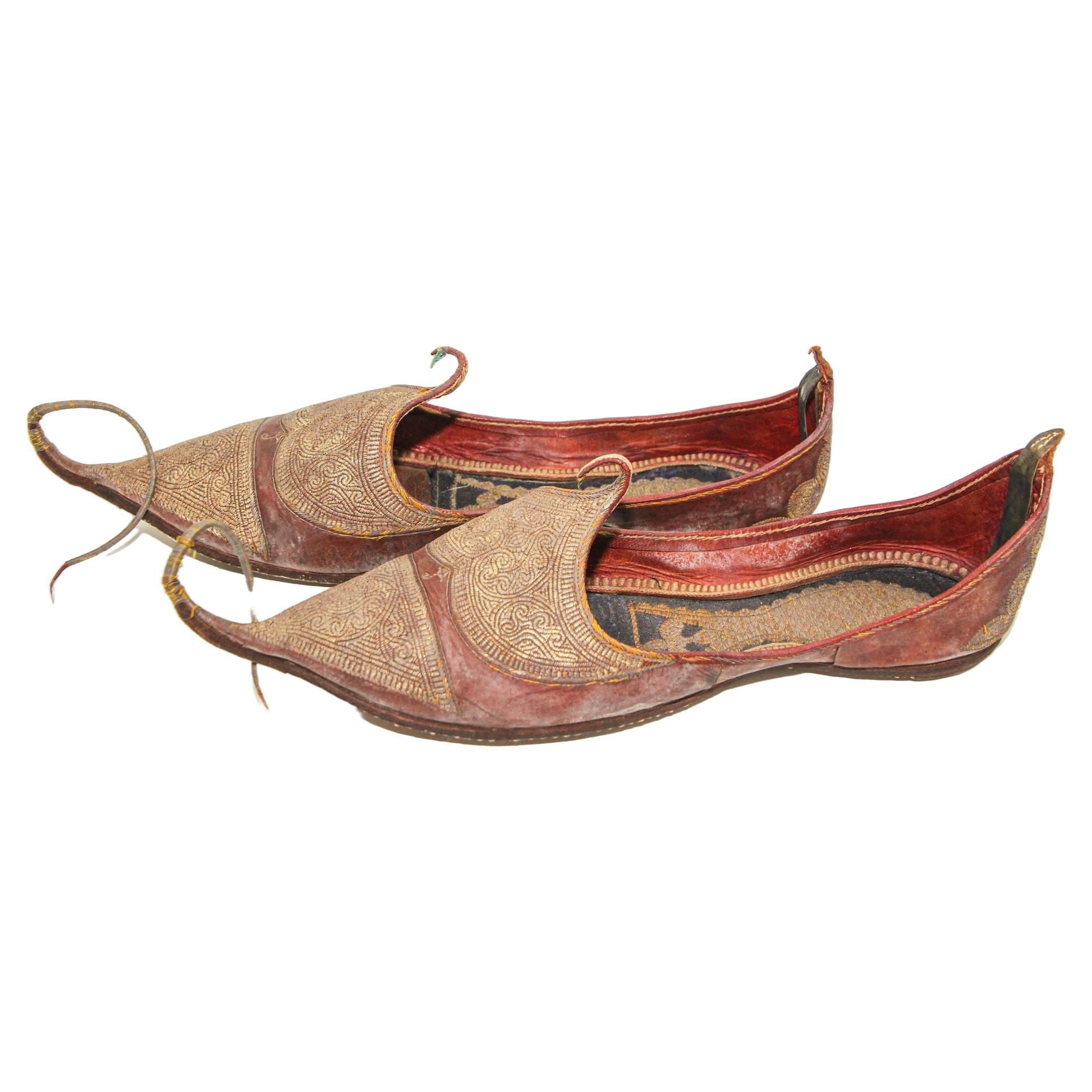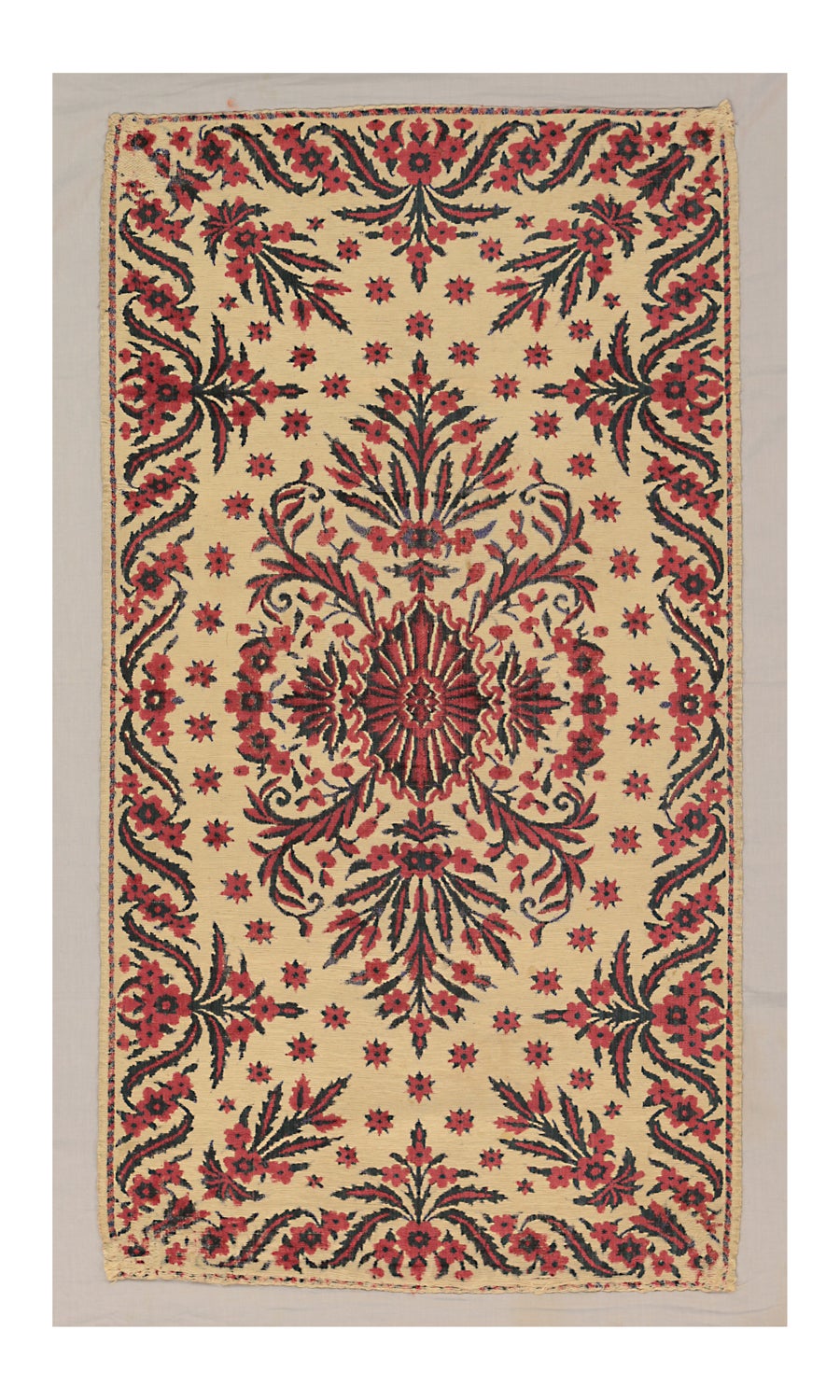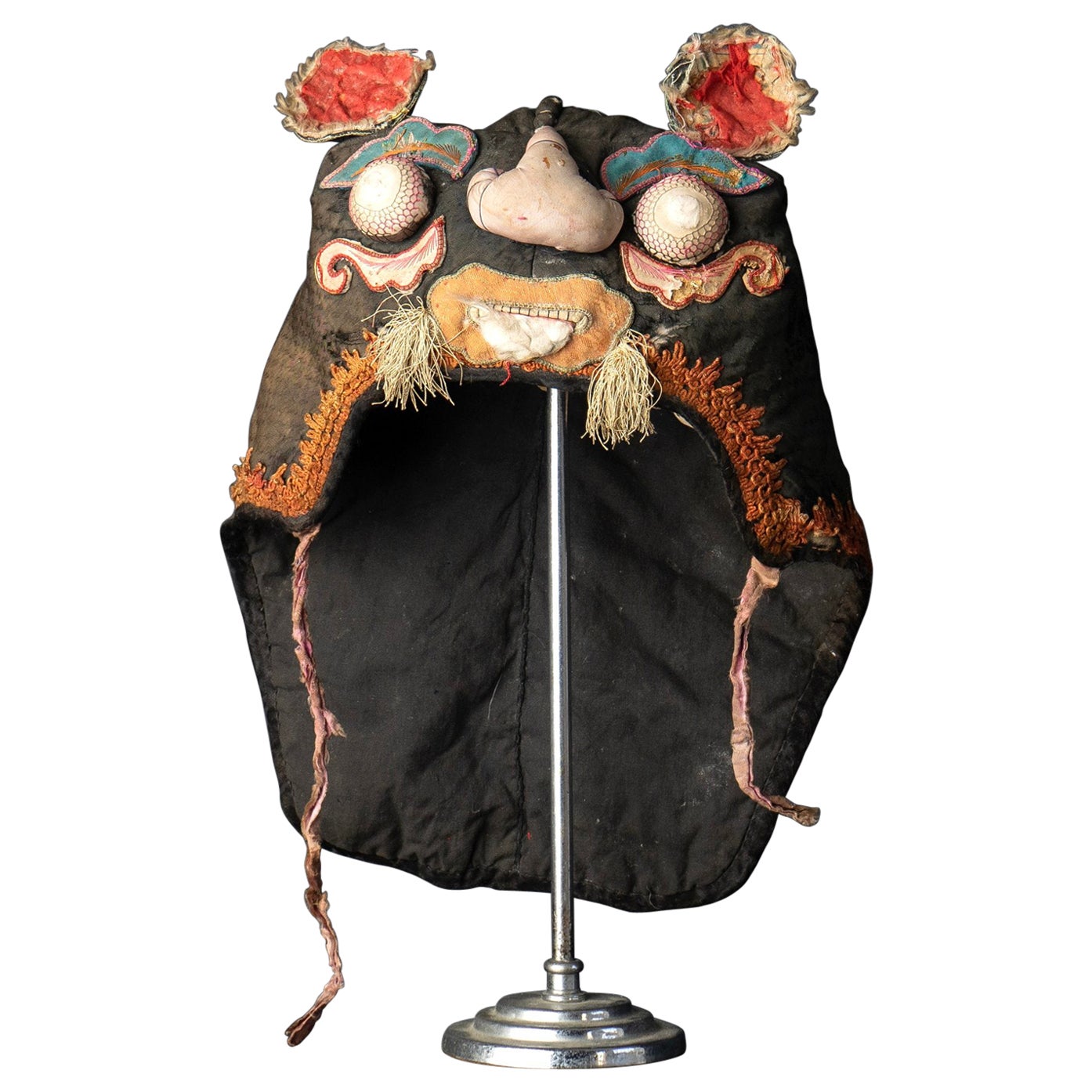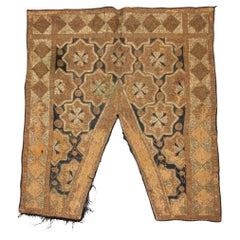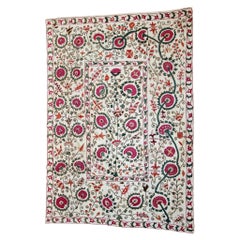
19th Century Moorish Islamic Ottoman Empire Textile Metallic Embroidered
View Similar Items
Want more images or videos?
Request additional images or videos from the seller
1 of 20
19th Century Moorish Islamic Ottoman Empire Textile Metallic Embroidered
About the Item
- Dimensions:Height: 39 in (99.06 cm)Width: 23.25 in (59.06 cm)Depth: 0.05 in (1.27 mm)
- Style:Islamic (In the Style Of)
- Materials and Techniques:Silk,Embroidered
- Place of Origin:
- Period:
- Date of Manufacture:1887
- Condition:Wear consistent with age and use. Minor losses. Minor structural damages. Minor fading. Thread has tarnished and silk is damaged in some parts please see pictures and ask for more if needed.
- Seller Location:North Hollywood, CA
- Reference Number:Seller: TFG191stDibs: LU906814549122
About the Seller
5.0
Platinum Seller
These expertly vetted sellers are 1stDibs' most experienced sellers and are rated highest by our customers.
1stDibs seller since 2011
2,645 sales on 1stDibs
Typical response time: 1 hour
More From This SellerView All
- 19th C. Islamic Textile Ottoman Empire Silver Metallic Threads Antique FragmentBy Mariano FortunyLocated in North Hollywood, CA19th C. Islamic Textile Ottoman Empire Silver Metallic Threads Antique Fragment. Early 19th century antique Islamic Ottoman Empire metallic threads embroidered silk textile. Antique oriental byzantine textile depicting embroidered flowers depicting branches filled-in with silk floss threads creating an intricate embroidered pattern. On two of the corners, the antique textile...Category
Antique 19th Century Turkish Islamic Textiles
MaterialsSilk
- 19th Century Islamic Art Ottoman Metallic Threads Arched Fragment TextileLocated in North Hollywood, CA19th Century Islamic Art, Ottoman Moorish Metallic Threads Embroidered Arched Textile. Collectible Museum quality antique textile fragment probably part of a wall hanging or mirror cloth. Early 19th century antique Islamic Ottoman Empire style embroidered silk and metal thread panel. Compositions in Moorish 8 pointed star design medallions surrounded by scrolling vine, lined, scattered losses and loose threads to silk. Antique Oriental Byzantine textile depicting embroidered flowers depicting branches filled-in with silk floss threads creating an intricate embroidered pattern. On two of the corners, the antique textile panel is embellished with bands of blue silk rushing framed by with antique metallic trims, this dramatic embroidered of meandering botanical's are done in earthy colors and embroidered on natural linen. An antique Ottoman Empire textile decorative and historical artifact. "Ottoman silk textiles are among the most elegant textiles produced in the Islamic word. Executed in a range of woven techniques including satin and velvet, these silks were produced for use both within the Ottoman Empire and for export to Europe and the Middle East, where they were considered among the most prized luxury objects. Most Ottoman silks produced for use within the Empire were used either for garments or furnishings." Condensed from: Nazanin Hedayat Munroe. Department of Islamic Art, the Metropolitan Museum of Art. This antique Islamic Art...Category
Antique Late 19th Century Turkish Islamic Textiles
MaterialsMetallic Thread
- 19th C. Suzani Bukhara Uzbekistan Antique Embroidered Islamic Art Textile SusaniLocated in North Hollywood, CAFabulous antique 19th C. Suzani from Bukhara Uzbekistan embroidered with swaying floral branches and flowers. Museum quality collectible antique hand embroidered Islamic Art textile called Susani or Suzani. Very fine art work embroidered with silk thread in many shades of green were used (sacred color in Islam it is the color of Paradise), and shades of pink from light pink to red to fuchsia. The yarns are organic vegetable dyed. The piece was made in different pieces that were put together. This antique Islamic folk art piece was embroidered in the city of Bokhara, on the Silk Road. The uses are limitless however, they are often used as wall hangings, table covers, sofa cover throw, bed spreads and upholstery fabric. A similar Susani is on display at the Museum of Islamic Art in Shangri LA Doris Duke Home is Hawai. Suzani (embroidery) from the Bukhara region of Uzbekistan, late 19th century, cotton with silk threads, Doris Duke Foundation for Islamic Art. Condition: There were some repair on the piece. the piece is not lined, shows some wear. Please check pictures and video for more condition. Dimensions: 69 in. x 50 in. The Silk Road Bukhara: Like scattered pearls along the vast expanse of the Great Silk Road, the cities of Uzbekistan glisten radiantly under the unforgiving sun. This nation, nestled in a picturesque oasis, holds a treasure trove of historical artifacts, owing to its advantageous position at the heart of the ancient Silk Road network. In the year 138 BC, a transformative era commenced as China graciously opened its borders to trade, giving rise to caravans that embarked upon this illustrious route. These trading pathways served as conduits not only for the exchange of goods and craftsmanship but also for the intermingling of cultures, beliefs, and wisdom. Even today, within the ancient walls of cities like Samarkand, one can still discern the echoes of bustling voices, the melodious jingle of camel harnesses...Category
Early 20th Century Uzbek Islamic Textiles
MaterialsLinen
- 19th Century Ottoman Moorish TableLocated in North Hollywood, CA19th century ottoman Moorish table. Antique fine example side table with a hexagon form inlaid with geometric designs with the Moorish sta...Category
Antique 1880s Turkish Moorish Side Tables
MaterialsFruitwood
- Antique Large Moorish Silk Textile Granada Spain Islamic ArtLocated in North Hollywood, CAAntique Large Moorish Silk Textile Granada, Islamic Spain. Spanish Moorish Woven Tapestry Granada Spain Islamic Art. From Granada, Islamic Spain, fabulou...Category
Early 20th Century Spanish Moorish Textiles
MaterialsSilk
- Antique Leather Mughal Raj Ottoman Moorish Shoes Gold EmbroideredLocated in North Hollywood, CAAntique Leather Mughal Moorish Turkish Ottoman Shoes with Gold Embroidered. A pair of rare late 19th century hand stitched and hand tooled leather shoes ...Category
Antique Late 19th Century Turkish Islamic Textiles
MaterialsLeather
You May Also Like
- 19th Century Turkish Ottoman Period Embroidered CaftanLocated in London, GBA 19th century Turkish ottoman period embroidered kaftan Measures: Height 123cm, width 133cm This antique kaftans dates from the Ottoman period in T...Category
Antique 19th Century Turkish Textiles
MaterialsSilver
- Antique Turkish Ottoman Beige Background Color Textile, 19th CenturyLocated in Ferrara, ITThis is a rare antique ottoman textile woven in Turkey during the 19th century that measures 118 x 55CM in size. Its design revolves around its...Category
Antique 19th Century Turkish Other Turkish Rugs
MaterialsCotton
$2,636 Sale Price20% Off - 19th Century Turkish Ottoman Period KaftanLocated in London, GBA 19th Century Turkish ottoman period kaftan Height 136cm, width 159cm This antique kaftan dates from the Ottoman period in Turkey during the 19th Cent...Category
Antique 19th Century Turkish Islamic Textiles
MaterialsSilver
- Framed Akha Tribe Embroidered BagLocated in Chicago, ILThis hand embroidered shoulder bag is from the Akha tribe and has been framed for display on a wall. The Akha are an indigenous hill tribe who live in small villages at higher elevat...Category
Mid-20th Century Thai Tribal Textiles
MaterialsGlass, Wood, Cotton, Silk, Hemp
- Japanese Silk Textile by Iida Takashimaya CompanyBy TakashimayaLocated in Christchurch, GBAs part of our Japanese works of art collection we are delighted to offer this charming Meiji period 1868-1912 embroidery of a chin dog aside a spray of peacock feathers and by one of the most famous textile company’s of the period, the Iida Takashimaya company, the breathtaking and simply captivating detail of the silkwork demonstrates some of the finest possible stitching methods available at that time and not surpassed to this day, the silk picture is cushioned and housed within its original black lacquered wood frame and importantly bearing the original and scarce Iida Takashimaya factory label to the reverse, an absolute masterpiece from a golden period of textile production, this picture would light up the wall of any room particularly your Japanese themed space . Provenance : UK Collection . Featured in – 2020 Vision of an enlightened ruler exhibition – plate 39 Literature : There is little doubt that a major part of the phenomenon of Japanese works of art exploding onto the worldwide stage leading up to and during the Meiji period was bought about by the Textile manufacturers of Kyoto, the most recognized of which will undoubtedly be the Nishimura company, founded in Kyoto in 1670 as textile traders, It was the 12th generation manager Nishimura Sozayemon (1855-1935) aged just 17 and remarkably adopted into the family as the son of a Chinese scholar who took the company to its dizzy heights. As early as 1873 just one year into his tenure the company were exhibiting at expositions and even during that early period the company picked up significant awards and medals with recognition both nationally and overseas , particularly in Paris in 1878 , thereafter the factory moved to new premises in Kyoto , presumably having outgrown their original site , this move coincided with the building of the new Imperial palace in Tokyo where Nishimura were commissioned to provide 64 embroidered wall panels...Category
Early 20th Century Japanese Meiji Textiles
MaterialsSilk
- Antique Chinese Silk Embroidered Tiger Hat, 19th Century Textile CapLocated in Bristol, GBAntique Chinese Handmade Textiles Probably made as a children’s hat, although it does fit on my head. Silk tiger hats were made for children, especially boys to help ward off evil ...Category
Antique 19th Century Chinese Qing Textiles
MaterialsSilk, Textile
Recently Viewed
View AllMore Ways To Browse
Brown And Blue Embroidered Textile
Islamic Antique Textile
Moorish Linen
Embroidered Peacock
19th Ottoman Moorish
19th Century Ottoman Moorish
Antique Ottoman Turkish Silver
Antique Silver Peacock
Islamic Ottoman Silk
Oriental Horse
Silk Fish Art
Antique Condensed
Antique Turkish Velvet Textile
Rushed Velvet
Embroidered Panel Silk Thread Velvet 19th Century
Embroider Art
Asian Embroidered Silk
Silk Embroidered Art
